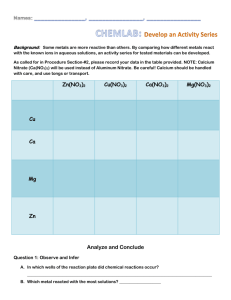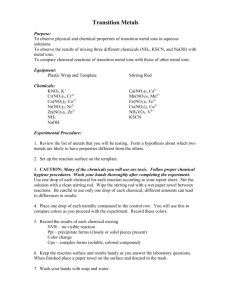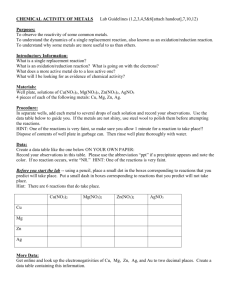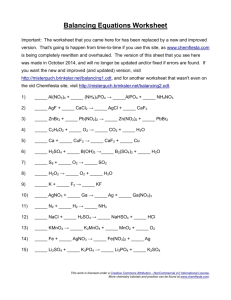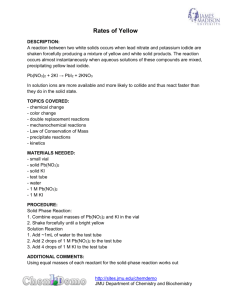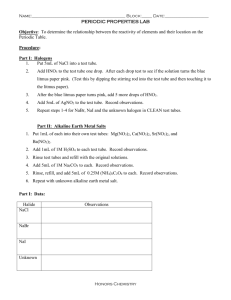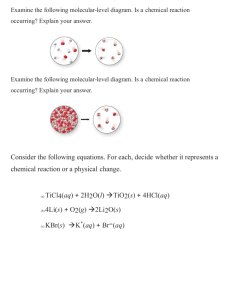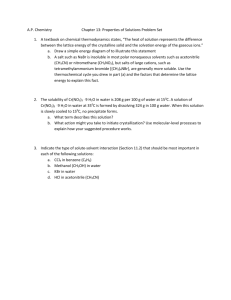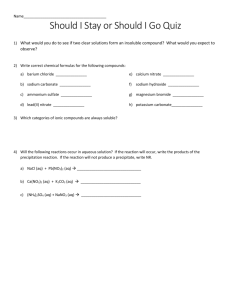Activity Series of the Metals
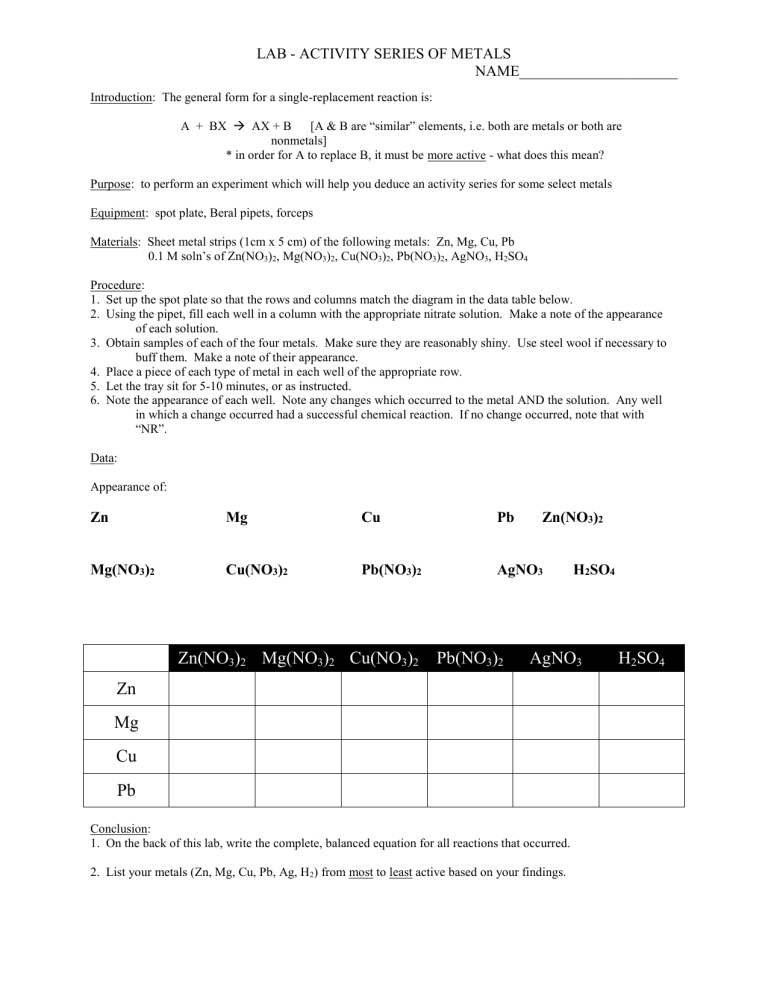
LAB - ACTIVITY SERIES OF METALS
NAME_____________________
Introduction: The general form for a single-replacement reaction is:
A + BX
AX + B [A & B are “similar” elements, i.e. both are metals or both are nonmetals]
* in order for A to replace B, it must be more active - what does this mean?
Purpose: to perform an experiment which will help you deduce an activity series for some select metals
Equipment: spot plate, Beral pipets, forceps
Materials: Sheet metal strips (1cm x 5 cm) of the following metals: Zn, Mg, Cu, Pb
0.1 M soln’s of Zn(NO
3
)
2
, Mg(NO
3
)
2
, Cu(NO
3
)
2
, Pb(NO
3
)
2
, AgNO
3
, H
2
SO
4
Procedure:
1. Set up the spot plate so that the rows and columns match the diagram in the data table below.
2. Using the pipet, fill each well in a column with the appropriate nitrate solution. Make a note of the appearance of each solution.
3. Obtain samples of each of the four metals. Make sure they are reasonably shiny. Use steel wool if necessary to buff them. Make a note of their appearance.
4. Place a piece of each type of metal in each well of the appropriate row.
5. Let the tray sit for 5-10 minutes, or as instructed.
6. Note the appearance of each well. Note any changes which occurred to the metal AND the solution. Any well in which a change occurred had a successful chemical reaction. If no change occurred, note that with
“NR”.
Data:
Appearance of:
Zn
Mg(NO
3
)
2
Zn(NO
Mg
Cu(NO
3
)
2
3
)
2
Mg(NO
3
)
2
Cu
Pb(NO
3
)
2
Cu(NO
3
)
2
Pb(NO
3
)
Pb Zn(NO
3
)
2
AgNO
3
H
2
SO
4
2
AgNO
3
H
2
SO
4
Zn
Mg
Cu
Pb
Conclusion:
1. On the back of this lab, write the complete, balanced equation for all reactions that occurred.
2. List your metals (Zn, Mg, Cu, Pb, Ag, H
2
) from most to least active based on your findings.
